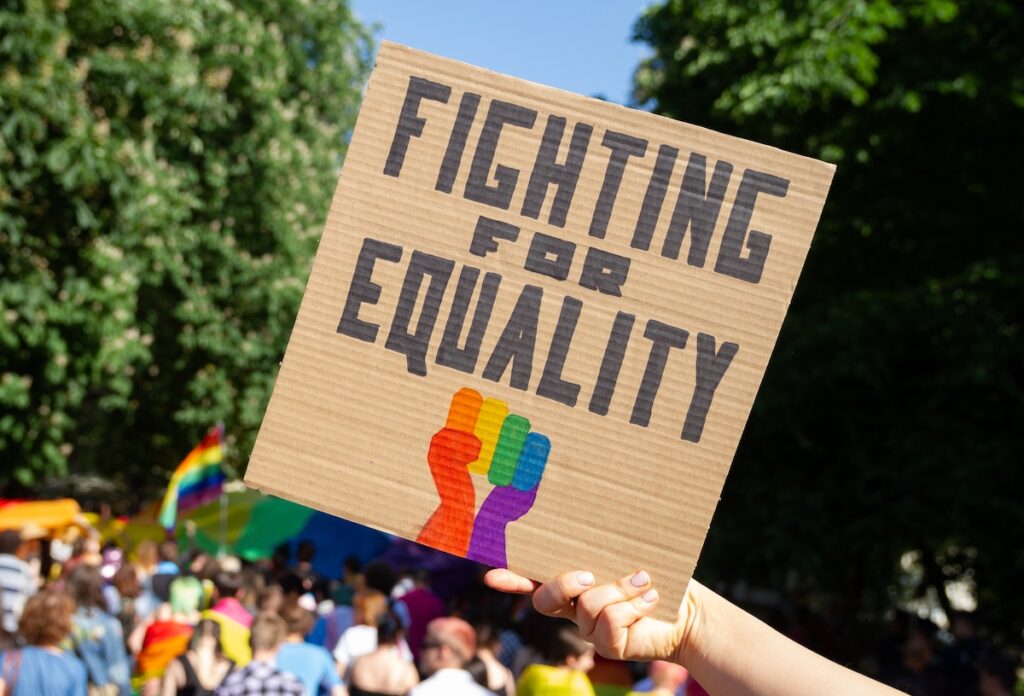
“I almost think it’s like, “Who hasn’t [self-injured]?” It’s almost like a question of who hasn’t,…it’s almost like rite of passage to be…and it’s sad to say it but I just feel like the way the society is built, it’s not designed for nonbinary…I don’t want to say nonbinary but, um, people who are not cis[gender]. It’s not designed for it so if you haven’t done it [non-suicidal self-injury] then you’re like a unicorn I almost think.”
– Transmasculine person, age 33, quoted in Jackman et al, 2018.
I thought this blog should open with the voice of a gender diverse person who knows first-hand what it’s like to self-injure. Knowing what they do, they probably wouldn’t be surprised by high figures for hospitalisation of trans and gender diverse (TGD) young people for suicidality and self-injury.
Recent research has revealed much about the specific mental health experiences and needs of TGD people. Mental Elf bloggers have highlighted studies looking into suicide risk; the effects of ‘minority stress’ on suicidality; how stigma and discrimination link to anxiety and depression; mental health care needs and substance use among TGD populations. The evidence they discuss shows TGD people (particularly young people) are at risk of poorer mental health and experience high levels of mental distress, which can be linked to stigma and discrimination and can result in addiction problems, self-injury, suicidality, or suicide.
A while ago I wrote a blog about a UK study on mental health and suicide risk in LGBTQ students. The findings resulted from a secondary analysis of the 2012-2013 Youth Chances survey and showed that being ‘transgender’ was significantly associated with the current use of mental health services, present mental health problems, suicide risk, and self-injury. While that particular study provided useful data on mental health risks for TGD students in the UK, it was not based on a large nationally representative sample. A recent study by Mitchell and colleagues (2022) aimed to address this gap in knowledge by looking at gender diversity and hospitalisation of young people for suicidality and self-injury in the US using such a sample.

Trans and gender diverse young individuals are at increased risk of poor mental health and high levels of mental distress due to stigma and discrimination.
Methods
For this ‘population-based, serial cross-sectional study’, the researchers interrogated the 2016 and 2019 releases of the nationally representative US Kids’ Inpatient Database (KID), the largest paediatric inpatient care database in the US, with over 3 million hospitalisation cases in each of the releases (accounting for 80% of all paediatric hospitalisations in the US).
They included over two million patients aged 6-20 and identified a subset using ICD-10 codes for ‘gender dysphoria’. Suicidality, self-injury and the combination of suicidality and self-injury were identified using the relevant ICD-10 codes. The researchers looked at demographic variables, recorded sex at admission, health insurance type, household income, and race and ethnicity. They were also interested in variables relating to hospitalisation, such as admission patterns and hospital location, size, ownership (public or private) and teaching status.
The prevalence of suicidality, self-injury and suicidality and self-injury combined was compared between patients with ICD-10 ‘gender dysphoria’ codes and those without. Univariable and multivariable regression tests were used to examine associations between ‘gender dysphoria’ and suicidality, self-injury and suicidality and self-injury combined. Individual-level confounders (such as race and ethnicity) and hospital-related confounders were used to explore how patient diagnosis of ‘gender dysphoria’ related to these. Regressions were performed to generate nationally representative estimates.
Results
In the US Kids’ Inpatient Database (KID) in 2016, 0.16% of patients aged 6-20 were labelled with an ICD-10 code for ‘gender dysphoria’ and by 2019 this had risen to 0.48%.
Patients with codes relating to ‘gender dysphoria’ had a greater prevalence of suicidality than those without such codes in both KID 2016 (36% vs 5%) and KID 2019 (55% vs 4%). This was also evident for self-injury in 2016 (13% vs 1%) and 2019 (15% vs 1%) and for suicidality and self-injury combined in 2016 (41% vs 6%) and 2019 (66% vs 5%).
Patients who were White, privately insured, or from higher income homes were proportionately more likely to have been assigned a code for ‘gender dysphoria’. Those with a diagnostic code were also more likely to have a primary psychiatric diagnosis.
Proportionately fewer patients with ‘gender dysphoria’ diagnostic codes were admitted to rural hospitals or were from Southern US, while fewer for-profit private hospitals had patients with such codes.

White, privately insured, or from higher income homes patients were more likely to have been assigned a diagnosis of ‘gender dysphoria’.
Conclusions
The authors conclude:
In a large representative national sample, transgender and non-binary young people with gender dysphoria-related diagnoses were frequently admitted to hospital for suicidality and self-harm.
They highlight inequities in the prevalence of ‘gender dysphoria’ coding for young TGD people who are ‘non-White’ and/or from socioeconomically disadvantaged backgrounds, as well as geographical inequities. They raise concerns about the effects of discrimination inside and outside healthcare settings.
The authors argue that the findings have important implications for providing supportive and affirmative mental health care to TGD young people who are admitted to the hospital for suicidality and/or self-injury, saying:
…our results are most directly relevant to inpatient paediatric health-care providers, by providing a framework for assessing their own personal and institutional practices surrounding gender diversity.

Trans and non-binary young people with ‘gender dysphoria’ diagnoses were more frequently admitted to the hospital for suicidality and self-harm.
Strengths and limitations
This study used a very large, nationally representative sample and the researchers employed rigorous statistical tests to analyse the data. However, they relied on potentially imprecise or biased administrative and clinical coding.
The authors carefully reflect on the study’s limitations. They recognise the problems inherent in using ICD-10 ‘gender dysphoria’ codes to identify TGD young people, noting that they won’t have captured all gender diversity and that the information was dependent on provider documentation. If practitioners were more likely to diagnose ‘gender dysphoria’ in the young people being hospitalised for suicidality and self-injury then the association could be upwardly biased, but the authors note that their figures are broadly consistent with existing research evidence.

Findings need to be interpreted with caution as research may not have captured all gender diversity in the sample with the use of ICD-10 ‘gender dysphoria’ codes.
Implications for practice
The study figures for TGD young people being admitted to hospital for suicidality and self-injury are highly concerning, with the numbers increasing between 2016 and 2019. Mitchell and colleagues are very clear about the practice implications of their research findings, recommending that:
Structural and health-care provider-level interventions are needed to reduce discrimination and expand gender-affirming competencies to prevent adverse outcomes for hospitalised transgender and non-binary people…
Perhaps the study tells us something deeper about the discrimination and stigmatisation in mental health that needs to be tackled. The research relied on the psychiatric diagnosis and classification of TGD young people as ‘gender dysphoric’, meaning that their gender identity and/or expression had been pathologised. The authors themselves acknowledge that the diagnostic labels they had to use were ‘pathologising and inappropriate.’ Recent research on trans children and families’ experiences of pathologisation in the UK concluded that ‘trans depathologisation [is] a critical priority for child rights and social justice’ (Horton, 2022). International organisations of trans and gender diverse people such as TGEU and Global Action for Trans Equality campaign for the depathologisation of trans and gender diverse identities. In 2019, trans-related categories were removed from the chapter on Mental and Behavioural disorders in the ICD-11 (Rodríguez et al, 2018).
The history and culture of gender diversity pathologisation in psychiatry should be acknowledged and addressed if mental health services and support for TGD people are to change as the study authors recommend. Experts have argued that ‘mental health providers must have a good working knowledge of the history of their relationship to the transgender and gender-diverse community’ (dickey & Singh, 2017). In a recent British Journal of Psychiatry editorial, Perlson and colleagues advocated ‘training clinicians to validate diverse gender identities without an assumption of pathology’ as crucial for providing support that upholds ‘the autonomy and self-determination of [trans and gender diverse] patients’ (Perlson et al, 2021).
Mental health care and support needs to be affirming, accessible and safe for TGD young people, particularly those from racialised communities. We know that social discrimination, stigmatisation and exclusion can result in distress so severe that it leads to hospitalisation for self-injury or suicidality. This study provides evidence on the important role paediatric inpatient practitioners can play in tackling discrimination and pathologisation, and in providing affirmative support for the high numbers of TGD young people who are admitted to hospital for suicidality and self-injury.

The findings highlight the urgent need for clinicians to tackle the pathologisation of gender diverse identities, use validating language and provide caring support.
Statement of interests
None.
Links
Primary paper
Mitchell, H.K., Keim, G., Apple, D.E., Lett, E., Zisk, A. & Dowshen, N.L. (2022) Prevalence of gender dysphoria and suicidality and self-harm in a national database of paediatric inpatients in the USA: a population-based, serial cross-sectional study. The Lancet Child & Adolescent Health 6 (12) pp.876-884.
Other references
dickey, l. m. & Singh, A.A. (2017) Social justice and advocacy for transgender and gender-diverse clients. Psychiatric Clinics of North America 40 (1) pp.1-13.
Horton, C. (2022) Depathologising diversity: Trans children and families’ experiences of pathologisation in the UK. Children and Society.
Jackman, K., Edgar, B., Ling, A., Honig, J., & Bockting, W. (2018) Experiences of transmasculine spectrum people who report non-suicidal self-injury: A qualitative investigation. Journal of Counseling Psychology 65(5) pp.586–597.
Perlson, J.E., Walters, O.C., & Keuroghlian, A.S. (2021) Envisioning a future for transgender and gender-diverse people beyond the DSM. The British Journal of Psychiatry 219 (3) pp.471-472.
Rodríguez, M.F., Granda, M.M. & González, V. (2018) Gender incongruence is no longer a mental disorder. Journal of Mental Health and Clinical Psychology.
Photo credits
- Photo by Katie Rainbow 🏳️🌈 on Unsplash
